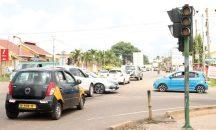A critical look at this year’s Population and Housing Census
Provisional figures of the 2021 Population and Housing Census show that Ghana’s population is now 30.8 million with the female population forming 51.3 per cent and the male population at 49.7 per cent.
The provisional data is not likely to be significantly different from the final data which is to be released in November this year.
This has certain implications for the country. If it shows that the female population continues to form more than half of the population, it is an indication that policy makers will have to tilt slightly towards the provision of more resources for the female population, even though the male population is also not to be neglected
Another revelation by the provisional data is that, the Greater Accra Region has shot into the lead as the most populous region, over taking the Ashanti Region. The fourth most populous region after Greater Accra Ashanti and Eastern regions is the Central Region.
These changes have certain implications for policy planners. It shows that policy planner will have to allocate more resources to these regions compared with the other regions in the country with comparative smaller population figures
The provisional data show that there have been population changes in certain districts towards the urban areas. People will, therefore, expect government to shift more resources to these areas.
What is important to note, however, is that if government follows this general pattern it will not be able to check rural-urban drift and the status quo will continue to remain the same.
The Spectator is, therefore, of the opinion that measures will have to be taken to change this drift. For example government should come up with special development projects in the rural areas to serve as an incentive to people who would want to stay in such areas. If this happens, professionals such as trained teachers, medical doctors, pharmacists and all others, will be encouraged to move into the largely rural areas
Again, it is important for us to note that of the housing structures which were counted, about 20 per cent were in non-conventional forms meaning that they were either wooden structures, container kiosks or other structures that cannot be described as decent.
This means that the government will have to fight for resources to bring improvement to the housing area. More people need decent housing structures, so government will have to take this into consideration when undertaking and implementing its development plans
The 80 per cent constituting decent housing is good and commendable, even though there is still room for improvement. In spite of this, however, the nation will have to work hard to provide decent accommodation for people.
Government has encouraged the State Housing Company (SHC) to put up more decent houses throughout the country. The SHC has done very well in this direction, but the challenge here is the cost of housing units that they put up.
This implies that cheaper building materials will have to be found to put up housing units that cost less and can be purchased by most of our poor people. It is a challenge we need to pursue seriously, if we are to overcome the housing deficit in the country.













